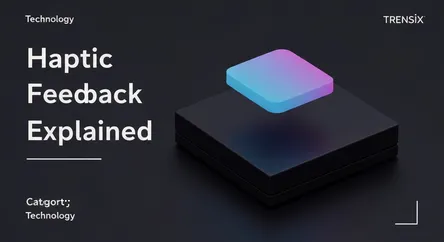Technology
Haptic Feedback Explained

Discover haptic feedback, the technology using vibrations and forces to simulate the sense of touch in gadgets like phones and gaming controllers.
What is it?
Haptic feedback, also known as haptics, is a technology that simulates the sense of touch by applying forces, vibrations, or motions to the user. Instead of just seeing or hearing a notification, you can feel it. Think of the subtle vibration when you type on your smartphone's keyboard, the rumble of a gaming controller when your character gets hit, or the gentle tap from a smartwatch for a notification. These tactile sensations are all forms of haptic feedback, designed to make our interactions with digital devices feel more physical and intuitive. It uses tiny motors or actuators to create a wide range of vibrations and textures.
Why is it trending?
Haptics are trending because the technology has evolved from simple buzzing to highly sophisticated, nuanced feedback. Advanced systems, like Apple's Taptic Engine, can create incredibly precise and varied sensations that mimic real-world textures and impacts. This is crucial for creating more immersive experiences in virtual and augmented reality (VR/AR), where feeling an object is as important as seeing it. In gaming, it heightens realism and player engagement. Furthermore, its integration into everyday devices like trackpads and car touchscreens is making user interfaces more responsive and satisfying to use.
How does it affect people?
Haptic feedback significantly enhances the user experience by providing confirmation and adding a layer of realism to digital interactions. A distinct tap confirming a successful mobile payment or a button press makes interfaces feel more reliable. For entertainment, it deepens immersion in movies and games, making the experience more visceral and exciting. Beyond convenience and entertainment, haptics also improves accessibility. For individuals with visual impairments, tactile cues can provide critical information, helping them navigate apps and devices more effectively by translating visual information into a language they can feel.